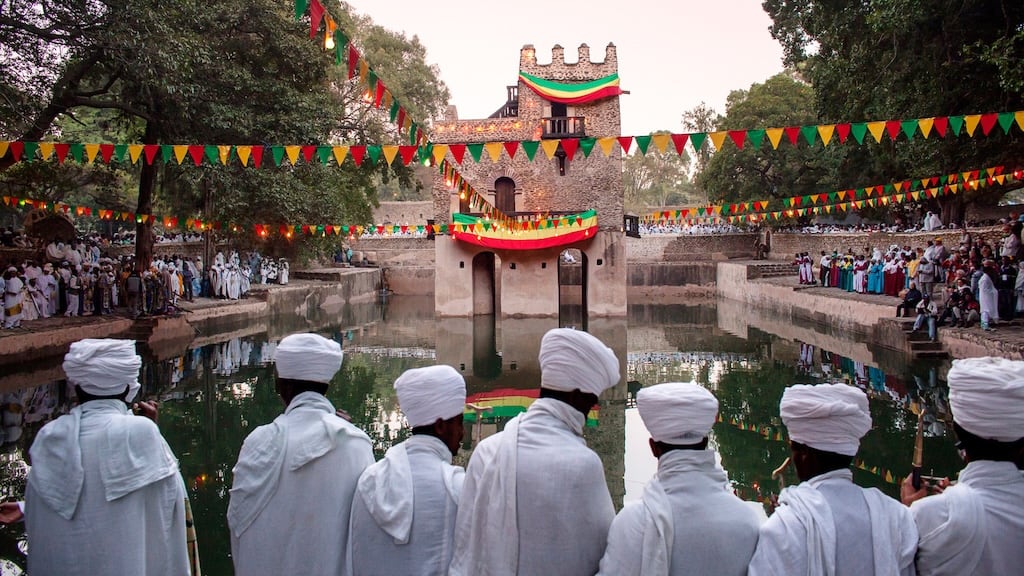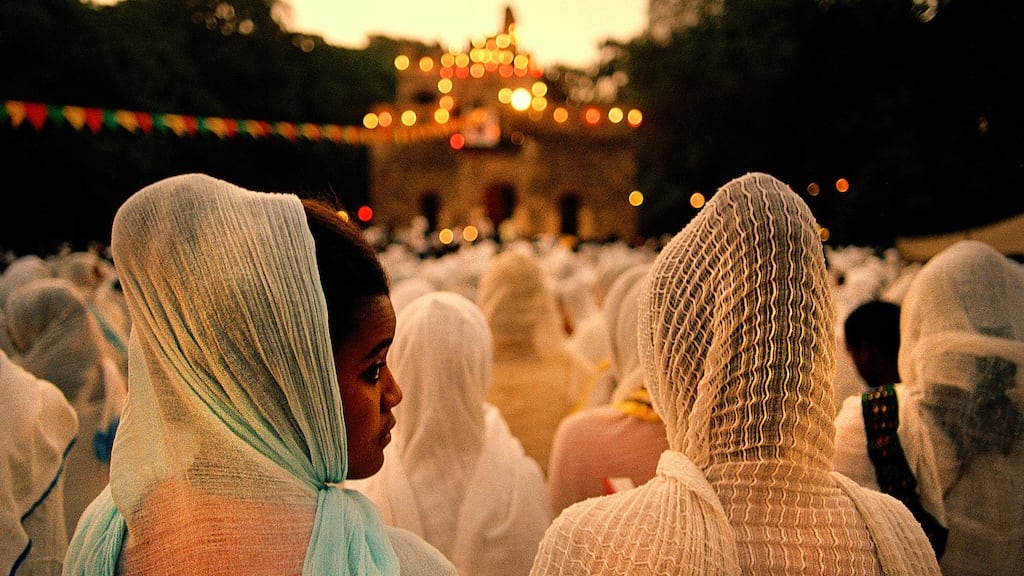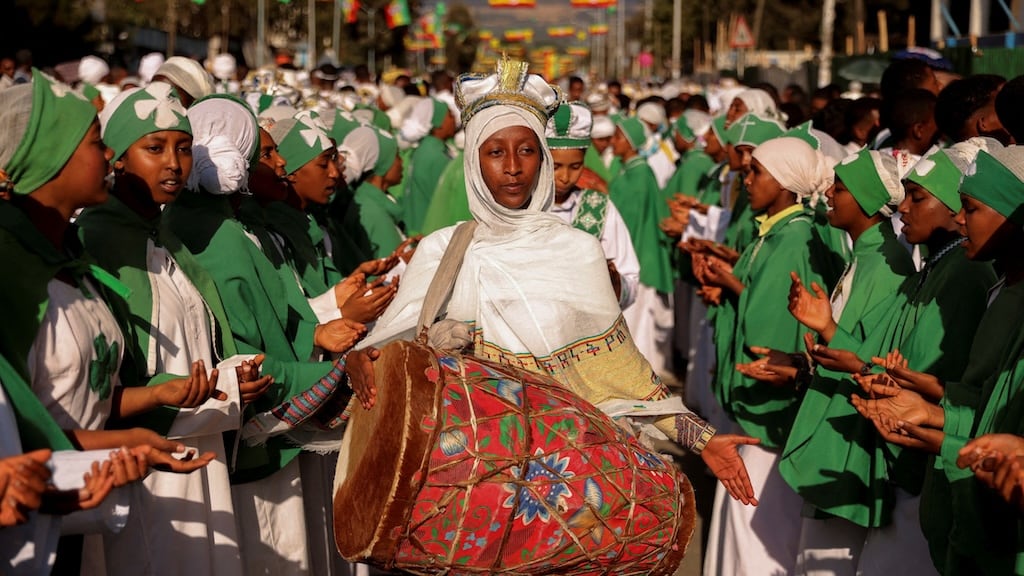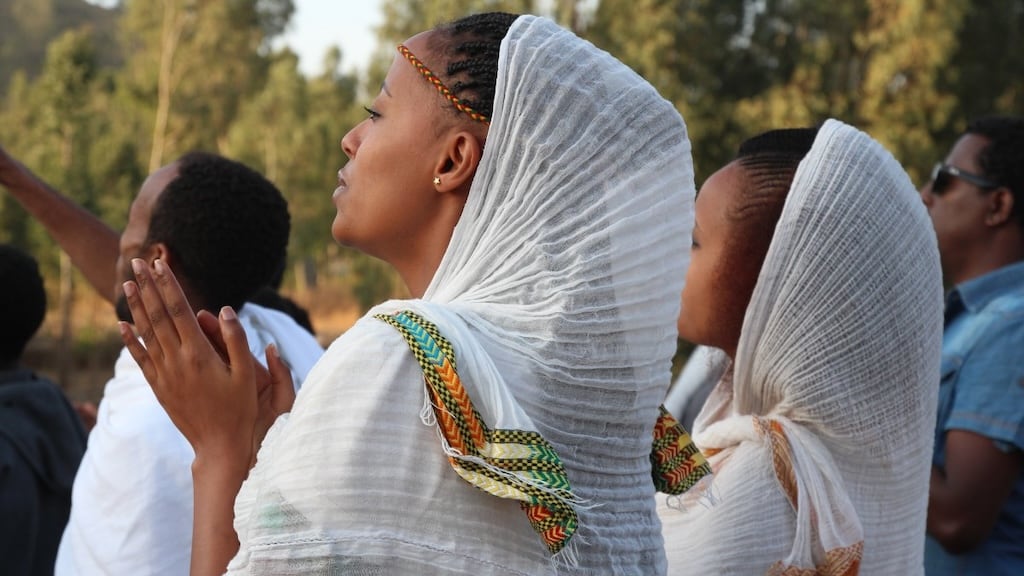Ethiopia's Divine Celebration
The Timkat Festival is Ethiopia's most significant religious and cultural event, a vibrant and joyous celebration of the Epiphany, which commemorates the baptism of Jesus Christ in the Jordan River.


This three-day festival, recognized by UNESCO as an Intangible Cultural Heritage of Humanity, transforms Ethiopia into a kaleidoscope of color, music, and devotion, drawing hundreds of thousands of pilgrims and tourists from around the world. The celebrations in Gondar, the former capital of the Ethiopian Empire, are particularly renowned for their grandeur and historical significance.
Historical Background
The origins of Timkat date back to the 16th century, and it has been celebrated with unwavering devotion ever since. The festival is deeply rooted in the traditions of the Ethiopian Orthodox Tewahedo Church, one of the oldest Christian churches in the world. The celebration is centered around the Tabot, a replica of the Ark of the Covenant, which is present in every Ethiopian Orthodox church.
During Timkat, the Tabots are taken from the churches and paraded through the streets, allowing the public to witness their sacred power. This unique tradition provides a fascinating glimpse into the ancient religious practices of Ethiopia, a country that has maintained its distinct Christian heritage for nearly two millennia. The festival's most famous site, the Fasilides' Bath in Gondar, was built in the 17th century by Emperor Fasilides and serves as the main stage for the spectacular water rituals.
Typical Activities
The Timkat festival unfolds over three days, each with its own unique ceremonies and activities. The eve of Timkat, known as Ketera, marks the beginning of the festivities. In the afternoon, the Tabots are carried out from the churches in a magnificent procession of priests in colorful robes, accompanied by the rhythmic chanting of prayers, the beating of drums, and the sound of sistrums (a traditional percussion instrument). The Tabots are then taken to a tent near a body of water, where they will stay overnight.
The main day of Timkat begins in the early hours of the morning with a divine liturgy. As the sun rises, the patriarch of the church blesses the water, and then sprinkles it on the assembled pilgrims. Many participants choose to immerse themselves fully in the holy water, renewing their baptismal vows in a powerful act of faith. Following the water ceremony, the Tabots are paraded back to their respective churches in another grand procession, filled with even more music, dancing, and joyous celebration. The third day of the festival, dedicated to the Archangel Michael, concludes the Timkat celebrations with a final church service and a communal feast.
Traditional Customs
Timkat is a feast for the senses, a spectacle of vibrant colors, enchanting music, and ancient traditions. The priests are adorned in elaborate, brightly colored robes and carry ornate, embroidered umbrellas, creating a stunning visual display. The laity, dressed in their finest traditional white clothing, known as "shamma," join the processions, singing, dancing, and clapping along to the music.
The air is filled with the scent of incense and the sound of traditional Ethiopian instruments, creating an atmosphere of profound spiritual devotion and communal joy. Feasting is also an integral part of Timkat, with families and communities coming together to share traditional dishes like "doro wat" (a spicy chicken stew) and "injera" (a sourdough flatbread), and to drink "tella" (a traditional beer).
What to Expect
For those planning to attend the Timkat Festival, it is an experience of a lifetime, but it requires some preparation. The most popular places to celebrate Timkat are Gondar and Lalibela, so it is advisable to book accommodation and flights well in advance. The weather in January is generally pleasant, with warm, sunny days and cool nights.


It is recommended to wear light, comfortable clothing, but also to bring a sweater or jacket for the cooler evenings. Modest attire is expected, especially when visiting churches and religious sites. Visitors should be prepared for large crowds and a lot of walking, so comfortable shoes are a must. It is also important to stay hydrated and to be respectful of the local customs and traditions. While the festival is a joyous and welcoming celebration, it is also a deeply religious event, and visitors should behave with reverence and respect.
Conclusion
The Timkat Festival is a truly unforgettable experience, a vibrant and moving celebration of faith, culture, and community. It is a unique opportunity to witness the ancient traditions of the Ethiopian Orthodox Tewahedo Church and to be immersed in the rich and diverse culture of this fascinating country.
Whether you are a religious pilgrim or a curious traveler, Timkat will leave you with a lasting impression of the beauty, devotion, and resilience of the Ethiopian people. For more information on the festival, you can visit the official Ethiopian Tourism Organization website.